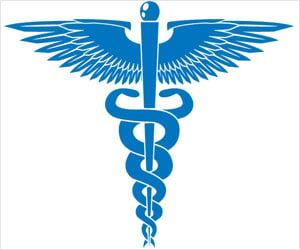
During embryonic development, cells migrate to their eventual location in the adult body plan and begin to differentiate into specific cell types. Thanks to new research at the University of Pennsylvania, there is new insight into how these processes regulate tissues formation in the heart. A developmental biologist at Penn's School of Veterinary Medicine, Jean-Pierre Saint-Jeannet, along with a colleague, Young-Hoon Lee of South Korea's Chonbuk National University, has mapped the embryonic region that becomes the part of the heart that separates the outgoing blood in Xenopus, a genus of frog.
Xenopus is a commonly used model organism for developmental studies, and is a particularly interesting for this kind of research because amphibians have a single ventricle and the outflow tract septum is incomplete.
In higher vertebrates, chickens and mice, the cardiac neural crest provides the needed separation for both circulations at the level of the outflow tract, remodeling one vessel into two. In fish, where there is no separation at all between the two circulations, the cardiac neural crest contributes to all regions of the heart.
"In the frog, we were expecting to find something that was in between fish and higher vertebrates, but that's not the case at all," said Saint-Jeannet. "It turns out that cardiac neural crest cells do not contribute to the outflow tract septum, they stop their migration before entering the outflow tract. The blood separation comes from an entirely different part of the embryo, known as the 'second heart field.'"
"As compared to other models the migration of the cardiac neural crest in amphibians has been dramatically changed through evolution," he said.
Saint-Jeannet's research will be published in the May 15 edition of the journal Development.
To determine where the neural crest cells migrated during development, the researchers labeled the embryonic cells with a fluorescent dye, then followed the path those marked cells took under a microscope. "We label the cardiac neural crest cells in one embryo and then graft them onto an embryo that is unlabeled. We let the embryo develop normally and look where those cells end up in the developing heart," said Saint-Jeannet.
Knowing these paths, and the biological signals that govern them, could have implications for human health.
"There are a number of pathologies in humans that have been associated with abnormal deployment of the cardiac neural crest, such as DiGeorge Syndrome," said Saint-Jeannet. "Among other developmental problems, these patients have an incomplete blood separation at the level of the outflow tract, because the cardiac neural crest does not migrate and differentiate at the proper location."
DiGeorge syndrome is present in about 1 in 4,000 live births, and often requires cardiac surgery to correct.
"Xenopus could be a great model to study the signals that cause those cells to migrate into the outflow tract of the heart,' said Saint-Jeannet. "If you can understand the signals that prevent or promote the colonization of this tissue, you can understand the pathology of something like DiGeorge syndrome and perhaps figure out what kind of molecule we can introduce there to force those cells to migrate further down."
Xenopus is a commonly used model organism for developmental studies, and is a particularly interesting for this kind of research because amphibians have a single ventricle and the outflow tract septum is incomplete.
In higher vertebrates, chickens and mice, the cardiac neural crest provides the needed separation for both circulations at the level of the outflow tract, remodeling one vessel into two. In fish, where there is no separation at all between the two circulations, the cardiac neural crest contributes to all regions of the heart.
"In the frog, we were expecting to find something that was in between fish and higher vertebrates, but that's not the case at all," said Saint-Jeannet. "It turns out that cardiac neural crest cells do not contribute to the outflow tract septum, they stop their migration before entering the outflow tract. The blood separation comes from an entirely different part of the embryo, known as the 'second heart field.'"
"As compared to other models the migration of the cardiac neural crest in amphibians has been dramatically changed through evolution," he said.
Saint-Jeannet's research will be published in the May 15 edition of the journal Development.
To determine where the neural crest cells migrated during development, the researchers labeled the embryonic cells with a fluorescent dye, then followed the path those marked cells took under a microscope. "We label the cardiac neural crest cells in one embryo and then graft them onto an embryo that is unlabeled. We let the embryo develop normally and look where those cells end up in the developing heart," said Saint-Jeannet.
Knowing these paths, and the biological signals that govern them, could have implications for human health.
"There are a number of pathologies in humans that have been associated with abnormal deployment of the cardiac neural crest, such as DiGeorge Syndrome," said Saint-Jeannet. "Among other developmental problems, these patients have an incomplete blood separation at the level of the outflow tract, because the cardiac neural crest does not migrate and differentiate at the proper location."
DiGeorge syndrome is present in about 1 in 4,000 live births, and often requires cardiac surgery to correct.
"Xenopus could be a great model to study the signals that cause those cells to migrate into the outflow tract of the heart,' said Saint-Jeannet. "If you can understand the signals that prevent or promote the colonization of this tissue, you can understand the pathology of something like DiGeorge syndrome and perhaps figure out what kind of molecule we can introduce there to force those cells to migrate further down."
 Incident 2day
Incident 2day



















